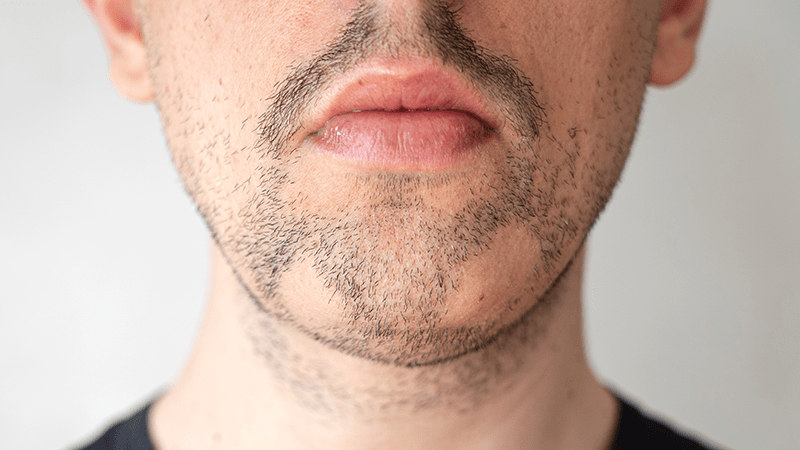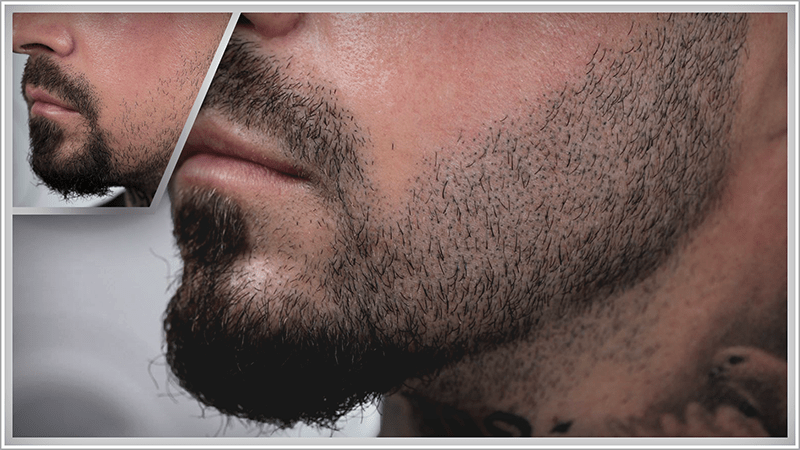In men, a thick, healthy-looking beard is seen as a symbol of masculinity and strength. But beard growth and appearance varies from person to person. Often, a man’s beard will grow unevenly or will be fuller in some places than others. This can usually be easily concealed using a razor or a different beard shape. But visible gaps in a beard are harder to hide, since they are almost always present. We explain what causes so-called alopecia barbae and what you can do if you have bald patches in your beard.
Circular hair loss in a man’s beard can be very upsetting
Alopecia barbae is not a genetic form of hair loss (like alopecia androgenetica) but a subtype of circular hair loss (alopecia areata) which occurs on the head. However, alopecia areata and alopecia barbae are different kinds of hair loss and can occur independently of each other. If your beard is affected, you won’t necessarily get bald patches on your head or vice versa. Alopecia barbae, or hair loss in the beard, is essentially a cosmetic problem – but one that can be very upsetting for the sufferer. The hairless patches can appear anywhere in the beard. They are clearly defined and usually circular. People who don’t suffer from alopecia barbae are often unaware that it is completely harmless, and assume it must be caused by some sort of infectious disease. This makes the condition even more distressing for the sufferer.
Where does alopecia barbae come from?
Like alopecia areata, alopecia barbae is an autoimmune condition. The body’s own immune system attacks the hair follicles and destroys them so that they cannot grow back again. It can be triggered by various factors:
- severe psychological distress or prolonged stress
- genetic causes
- chemical substances
If you think you are suffering from alopecia barbae, the first thing you should do is see a doctor. The doctor will help you identify the causes of your hair loss and, in some cases, eliminate them.
Can alopecia barbae be cured?
Medication options for circular hair loss in the beard are very limited. In some people, cortisone has had good results. But the hair loss often starts again as soon as the patient stops taking the medication. Immunosuppressants can be used to stop the body’s immune system attacking its own hair. But since these have severe side effects, they are not generally prescribed for alopecia areata. For some sufferers, however, there is light at the end of the tunnel: when alopecia barbae occurs in a less severe form, the symptoms can sometimes go away of their own accord after a while and the hair starts to grow back again.
Your options for concealing alopecia barbae
Bald patches in the beard are hard to miss. Even after shaving, these patches are often visible if you have dark hair or strong beard growth.
- One option that appeals to many sufferers of alopecia barbae is a hair transplant, in which hair is transplanted from other areas of the body onto the face. But this method will not be effective if the immune system continues to attack its own hair follicles in the affected area.
- The only effective solution is scalp micropigmentation, which conceals the bald patches perfectly. This makes them less noticeable both in a full beard and on a clean-shaven face. Another advantage: beard micropigmentation is long-lasting and completely safe.
Do you want a smooth and even beard?
Find out about our beard pigmentation today!

